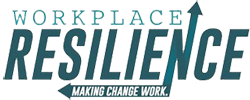 I was working out at the gym recently when I spied a new piece of cardio equipment. I noticed a few people trying it out and I was curious as to what I might be missing. Finally, I worked my way over to check it out. On my way, I passed one of the employees and I inquired about the machine.
I was working out at the gym recently when I spied a new piece of cardio equipment. I noticed a few people trying it out and I was curious as to what I might be missing. Finally, I worked my way over to check it out. On my way, I passed one of the employees and I inquired about the machine.
She informed me that she already had used the new equipment and had stayed on this “climbing apparatus” for 70 minutes. Well, if she could do it, so could I. As I journeyed toward the machine, I came across a few other people that had tried it out. They all reassured me that it was very hard. I got snapped in and quickly started climbing. Within seconds, I felt myself struggling to catch my breath— it took all my willpower to stay on for 2 whole minutes. When I got off the machine, I was shaking and gasping for air.
I made it through a whole 2 minutes of climbing. Now, what irritated me about this experience was that I consider myself to be in pretty good shape. I bike long distances every weekend and I have built up my endurance. Yet, I struggled to make it through 2 minutes!
I decided that I was capable of much more than that first try. Two days later, I got on the climber and told myself that I was not getting off until it hit 5 minutes. A couple of days after that, I told myself that I was going to make it 10, and so on, until last week, when I made it through 45 minutes on that evil machine.
Now, how did that happen?
Along the way, people would come over to assess my progress. I would listen to their multitude of rationalizations as to why they shouldn’t and wouldn’t work out on this particular piece of equipment. In other words, they had excuses to not take action.
There’s a reason that I’m sharing this story and it’s not to impress everyone with my physical prowess. I don’t think that this experience is much different than anything you attempt to take on in life. The first time you try something new can be quite difficult and to be honest, failing miserably is not a good feeling. I’m betting that you’re a lot like me and you like to feel confident and comfortable in what you attempt in life. However, the key to making it to the other side is being willing to walk through the bad feelings.
You see, the individuals that I witnessed trying it out and never going back could not get past that uncomfortable feeling. They were not able to wait it out for those good feelings that finally kick in when you make it to 45 minutes. They could not see past RIGHT NOW.
And there you have it. Whether it’s a potential career opportunity at work, a new diet that you need to adopt, or the thought of a career switch, the future can look quite unpredictable and downright uncomfortable. However, if you can just acknowledge the way you feel, WHY you feel the way you do, recognize the rationalizations for what they truly are (excuses), and STILL push through the uncomfortable feelings, you’re going to achieve your life goals.










